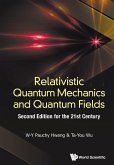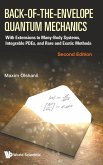JohnsANALY MECH RELATIV & QUANT MECH 2E OGT C
For the past 30 years, Professor Johns has taught graduate classical and quantum mechanics courses at San Francisco State University. This teaching experience has given him a sensitivity to the intellectual needs of physics graduate students. For the past fifteen years, he has had an association with the Department of Theoretical Physics at Oxford, making yearly visits. He does research in the foundations of physics: Hidden variable models, foundations of relativity, foundations of quantum mechanics. He has also done research work in theoretical Nuclear Physics and Nuclear Astrophysics, at the Niels Bohr Institute, Orsay, and the CEA laboratories in Paris.
I: INTRODUCTION: THE TRADITIONAL THEORY
1: Basic Dynamics of Point Particles and Collections
2: Introduction to Lagrangian Mechanics
3: Lagrangian Theory of Constraints
4: Introduction to Hamiltonian Mechanics
5: The Calculus of Variations
6: Hamilton's Principle
7: Linear Operators and Dyadics
8: Kinematics of Rotation
9: Rotational Dynamics
10: Small Vibrations About Equilibrium
11: Two-body Central Force Systems
12: Introduction to Scattering
II:MECHANICS WITH TIME AS A COORDINATE
13: Lagrangian Mechanics with Time as a Coordinate
14: Hamiltonian Mechanics with Time as a Coordinate
15: Hamilton's Principle and Noether's Theorem
16: Relativity and Spacetime
17: Fourvectors and Operators
18: Relativistic Mechanics
19: Canonical Transformations
20: Generating Functions
21: Hamilton-Jacobi Theory
III: MATHEMATICAL APPENDICES
A: Vector Fundamentals
B: Matrices and Determinants
C: Eigenvalue Problem with General Metric
D: The Calculus of Many Variables
E: Geometry of Phase Space









